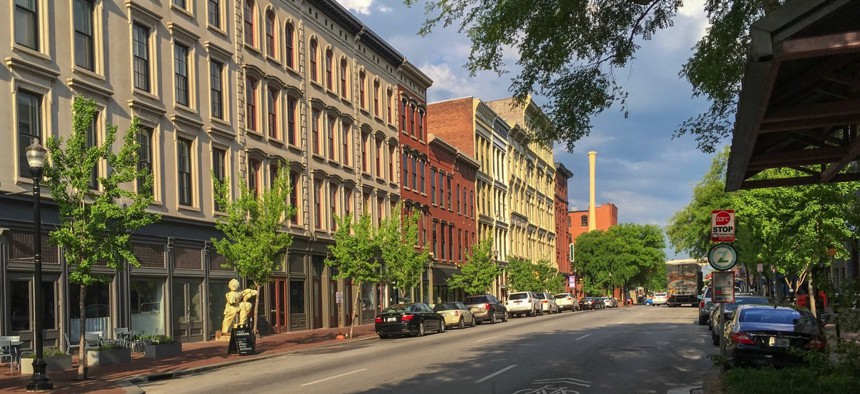A New Open-Source Framework for Government Projects

Louisville, Kentucky Louisville, Kentucky
Louisville, Kentucky is making the infrastructure for analyzing historic Waze data available to anyone who partners on the process.
The Louisville Metro Government recently moved some of its mobility data to the cloud and open-sourced the code so any city can build the infrastructure nearly for free.
Last year, Kentucky’s largest city won an Amazon Web Services grant to build a traffic data warehouse, merging its information with Google-owned Waze’s, and then run predictive analytics in the cloud to better time traffic signals to manage flow.
With the initial work on the Waze component complete, the city turned to local developer Slingshot to roll out a roadmap of new features.
“This will be the first time … cities will have seen this historic data in any sort of tool,” Michael Schnuerle, Office of Civic Innovation data officer, told Route Fifty in an interview.
The roadmap consists of four phases: getting the raw Waze data feed into a relational database; adding analysis tools for immediate use cases; creating read-only application programming interface, or API, calls for accessing data internally and externally; and finally producing a map overlaying realtime and historic traffic alerts, jams and irregularities.
Slingshot started working on the roadmap for free, but Amazon agreed to pay in order to speed development to within two months.
More than 600 local, state and federal governments have signed up for the Waze Connected Citizens Program, and more than 80 have expressed interest in a new Waze open source processor—New York City; Los Angeles; Anchorage, Alaska; and Denver among them—to contribute code or deploy the finished solution. The only cost they’ll incur will be that of paying the cloud provider, Amazon, for storage and data transfer: less than $200 a month.
Partner cities will have in 30 minutes the same architecture it took Louisville months to build. And by plotting historic data on the map, cities will be able to depict how events like the Kentucky Derby affect traffic and study how changes in signal timing and road configuration alleviate congestion.
For Schnuerle, the ramifications go beyond Waze to numerous other open source projects that can employ the same framework so governments can be a part “at really no cost.” The network is being called the Open Government Coalition, and it’s considering tackling the “digital divide” through internet speeds and using traffic cameras to monitor road quality as well.
“To me, this is a new thing: providing the entire infrastructure—through a well-documented process from a third-party company—to build out an open-source tool that’s immediately useful to cities collaborating on coding and deployment.”
Dave Nyczepir is a News Editor at Government Executive’s Route Fifty and is based in Washington, D.C.
NEXT STORY: Use it or lose it: Leveraging data for better citizen satisfaction






